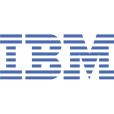 IBM (NYSE:IBM) today announced that it has made available an advanced software technology that can help predict the transmission of diseases across countries and around the globe to the open source community. The tool will aid scientists and public health officials in understanding and planning more efficient responses to health crises, ultimately providing new tools for protecting population health.
IBM (NYSE:IBM) today announced that it has made available an advanced software technology that can help predict the transmission of diseases across countries and around the globe to the open source community. The tool will aid scientists and public health officials in understanding and planning more efficient responses to health crises, ultimately providing new tools for protecting population health.The software, known as Spatiotemporal Epidemiological Modeler (STEM), is now available for use through the Eclipse Open Healthcare Framework Project (OHF), hosted at the Eclipse Foundation, the non-profit foundation that guides the Eclipse open source community.
STEM represents nearly three years of research spanning the globe with scientists from IBM’s Almaden, Haifa and Watson labs contributing to its creation. The technology is designed to enable the rapid creation of epidemiological models for how an infectious disease, such as avian influenza or dengue fever, is likely to geographically spread over time. STEM, which runs on any operating system, creates a graphical representation of the spread of a disease based on a variety of parameters such as population, geographic and macro-economic data, roadmaps, airport locations, travel patterns and bird migratory routes around the world.
“STEM will allow public health officials to model the spread of a disease much like modeling a storm or hurricane – it allows us to produce a public health 'weather map' for the spread of a particular disease,” said Joseph Jasinski, IBM Distinguished Engineer and program director, Healthcare and Life Sciences. “Until now, it has been difficult to simulate health crisis scenarios on a global scale. STEM gives us the power to do that.”
A basic epidemiological model framework will be provided to software developers, who can customize and configure the models based on their specific requirements. These models, which involve multiple populations and interactions between diseases, can help public health experts develop more effective preparedness plans. IBM’s donation is also intended to help facilitate collaboration between governments, scientific researchers and other players in the public health community. Users will have the ability to share the customized epidemiological models that they create in addition to the plug-ins they build using Eclipse.
STEM is one of the key technologies being utilized in the Global Pandemic Initiative, a collaborative effort formed by IBM and over twenty major worldwide public health institutions to help prevent the spread of infectious diseases. The tool is also compatible with the standards-based interoperable healthcare infrastructure developed by IBM and can query clinics, hospitals, lab systems and other information sources for anonymized data by disease, which enables a complete picture of the health of a population with real-time data.
“Eclipse is a community that promotes innovation and collaboration,” said Mike Milinkovich, executive director, Eclipse Foundation. ‘We are thrilled to have IBM’s STEM technology contributed to Eclipse and look forward to fostering more innovation on this important technology.”
To download STEM, please go to: http://www.eclipse.org/ohf/components/stem/
For more information about IBM, go to: www.ibm.com
No comments:
Post a Comment